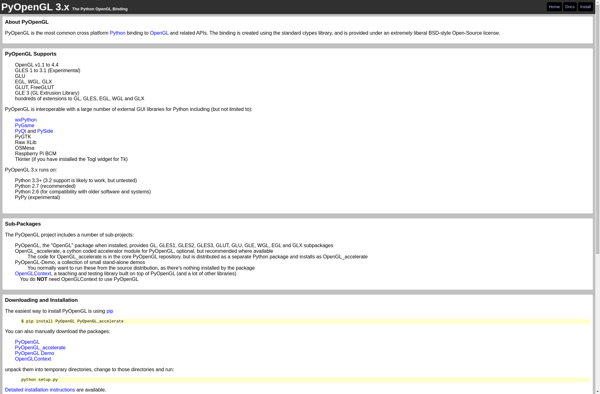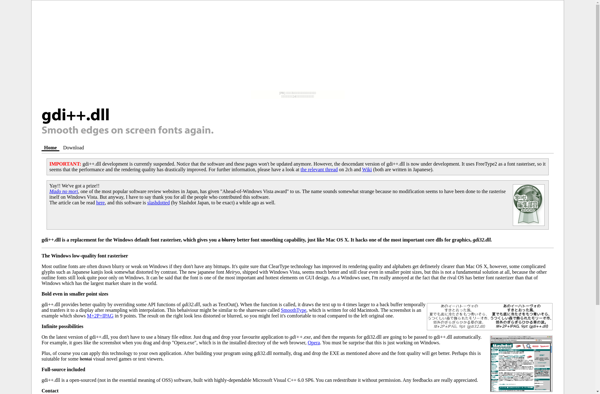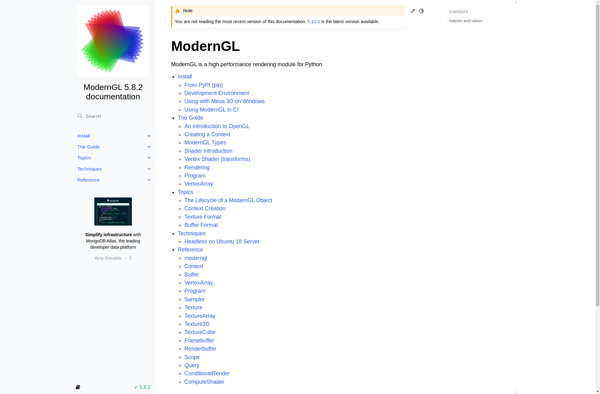PyOpenGL
PyOpenGL is a Python binding for the OpenGL graphics library. It allows Python programs to use OpenGL for 3D graphics rendering. It provides an interface between Python and OpenGL.

PyOpenGL: Python Binding for OpenGL
PyOpenGL is a Python binding for the OpenGL graphics library, enabling Python programs to utilize OpenGL for 3D graphics rendering and providing an interface between Python and OpenGL.
What is PyOpenGL?
PyOpenGL is a Python binding for the OpenGL graphics library. It allows developers to use OpenGL in their Python programs for 3D graphics rendering, visualization, and more.
Some key details about PyOpenGL:
- Enables Python code to interface with OpenGL through wrappers around OpenGL's C language API
- Provides access to a wide range of OpenGL functionality including shaders, textures, geometries, matrix transformations, lighting, animations, and more
- Works with multiple OpenGL versions including modern versions like OpenGL 3.3+
- Supports creating real-time 3D visualizations, games, scientific modeling applications, and other graphics-intensive software using OpenGL
- Integrates well with other Python scientific libraries like NumPy for fast math operations
- Open source library, compatible with multiple Python versions
By leveraging PyOpenGL, developers can harness the power of hardware-accelerated 3D graphics rendering in their Python programs for high-performance visual applications. The library handles interacting with low-level OpenGL C code, enabling Python developers to focus on higher-level application logic.
PyOpenGL Features
Features
- Python bindings for OpenGL
- Support for OpenGL versions 1.1 to 4.6
- Integrates with other Python graphics libraries like PyGame
- Can be used for 2D and 3D graphics programming
- Has both high and low level APIs
- Cross platform support
Pricing
- Open Source
Pros
Lets you use OpenGL in Python
Mature and well-supported library
Good performance
Lots of examples and documentation available
Active user community
Cons
Only an interface, still need to know OpenGL
Documentation could be more complete
Some platforms or OpenGL versions may have limited support
Not as full-featured as C/C++ OpenGL
Official Links
Reviews & Ratings
Login to ReviewThe Best PyOpenGL Alternatives
Top Development and Python Libraries and other similar apps like PyOpenGL
DirectX
DirectX is a collection of application programming interfaces (APIs) developed by Microsoft for handling tasks related to multimedia, especially game programming and video, on Microsoft platforms. First released in 1995, DirectX is composed of multiple APIs:- Direct3D for rendering 2D and 3D graphics.- DirectSound for the playback and recording of...

Vulkan
Vulkan is a low-overhead, cross-platform 3D graphics and computing API that provides high-efficiency access to modern GPUs used in a wide variety of devices from PCs and consoles to mobile phones and embedded platforms.It was designed by the Khronos Group as the successor to OpenGL and OpenCL and has been...

GDI
GDI (Graphics Device Interface) is a core component of Microsoft Windows operating systems that enables applications to use graphics and formatted text. It acts as an interface between an application and the graphics drivers, providing device-independent graphics rendering services.Some key features and capabilities of GDI include:Drawing primitive shapes like lines,...

ModernGL
ModernGL is an OpenGL modernization package for Python designed to ease the creation of real time graphics applications and 3D games. Its goal is providing an object oriented GL API that is easy to use and focused on productivity without sacrificing performance.Some key features of ModernGL include:Unified OpenGL 3.3+ Core...
